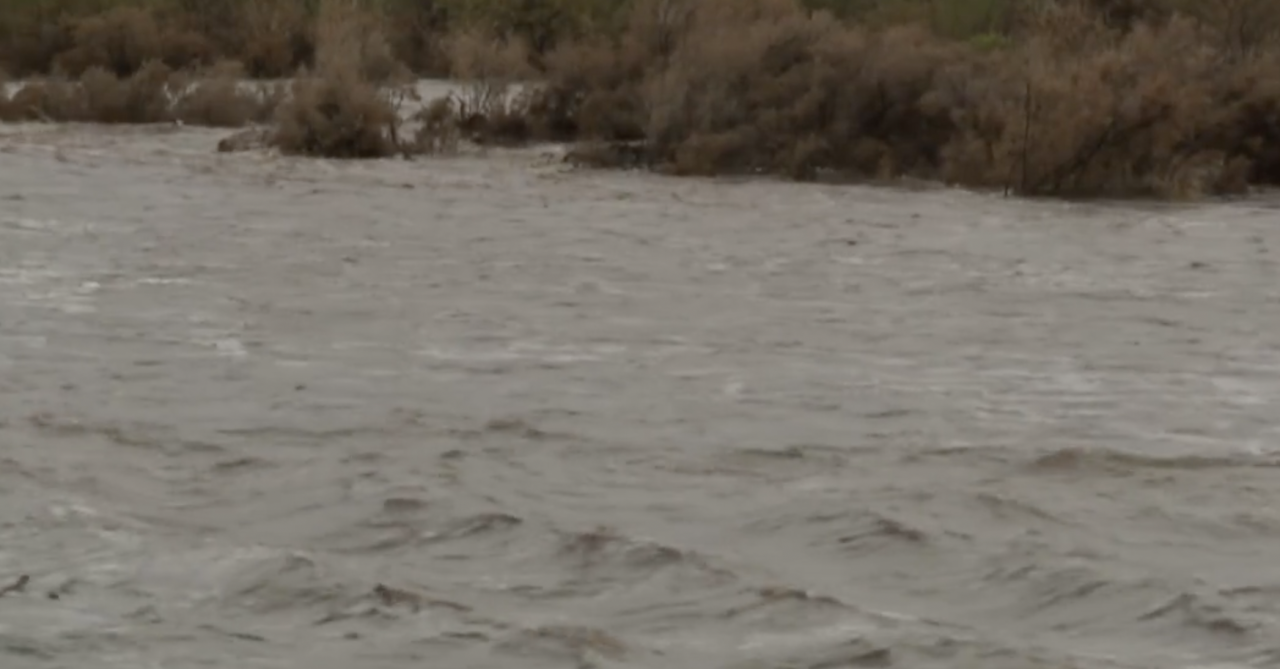TUCSON, Ariz. (KGUN) — “One day my wife and I were flying from Boston to Tucson. And as we came to Tucson, the Rillito River, we came during a rainstorm, and the Rillito River, you could see a wall of water rushing down the Rillito. It was a pretty spectacular sight and you got to see that. We got to see that from the plane.”

Kent Solberg, who owns Kent’s Tools, explains how different the Rillito River looked back in the early '70s, compared to now.
“We opened this store 10 years ago and we have our other store on Grant Road. It's been open since '82. We've been in business since '78. I've been in Tucson since '72," Solberg says.
"As a matter of fact, the first monsoon I saw, I was working up in the San Carlos reservation, and I came down to Tucson to visit and I came down during the monsoon. And back then the sewer system wasn't all that good. And Speedway flooded. It must have flooded about a foot and a half height. And it was just amazing.”
But, as Joseph Cuffari with the Pima County Flood Control District explained, floods like that, especially the flood of '83, can also lead to a lot of damage.

“So the 1983 is the flood of record for the Santa Cruz River," says Cuffari. "It was the most active during that time frame. What we saw was a lot of property damage related to that. There were millions of dollars worth of property damage. The lateral migration of the wash undercut those structures and eroded it.”

Luke Cole, with the Sonoran Institute Santa Cruz River Program, described why.
“When we get these big monsoon storms or we get big winter rains kind of like we had in this past winter, we have water flowing in the Santa Cruz river where we're standing right now for months and months and months.," explains Cole.
"When you look up at the Rillito River just to the north of us, they had 170 days of flow in the Rillito this year. In past years even when we had monsoon, good monsoons, it was 60, 70, maybe 80 days.”
So, this led the county to construct a plan to protect properties and people’s livelihood. They decided to bank protect the rivers, which protects it from migrating and undercutting those structures.
Cufarri added, “Where there is bank protection, it reduces that lateral migration of the wash channels, it’s essentially being contained like a bathtub. So that provides the opportunity for businesses or private residences, commercial, what have you, to build along those river corridors.
"Where there’s not bank protection, Pima County has established what’s called safe setbacks from those erosion hazard areas. So, depending on the size of the wash, you may have to be 25 feet away from it, but for those bigger washes where there’s no bank protection, 500 feet may be the norm,” says Cuffari.
But how do we restore the Santa Cruz River to its original state, and is that even possible?
“Pima County Flood Control, along with several non-governmental agencies, have developed what is called a Santa Cruz River Management Plan and Living River Management Plan. Do we want to see flowing water, do we want to provide more recreational and urban life interface? So, Pima County is taking a strong approach to managing the river system and making it a riparian area as it once was, “ says Cuffari.
This is also why the Heritage project was implemented, according to Cole.
“That has allocated some of the high quality affluent that flows in the Santa Cruz River up by Roger Road, it’s now pumped back upstream to this downstream stretch in downtown Tucson where we now have a few miles of flow in the river where it hadn’t been flowing regularly for over 100 years," Cole says. "We’ve now had 4000 years of continuous agriculture in Tucson as a result of the benefits brought in by the Santa Cruz River.”
As to whether the Santa Cruz River will ever regain its original flow from the '70s, Solberg is skeptical. “You know, it must be a perfect storm in order for a monsoon to happen. And I don't think those perfect storms are happening as quickly as they used to.”

——-
April Madison is a KGUN 9 meteorologist. April started her media career in radio in the late 90's, while attending the University of Arizona. She was an Airborne Traffic Reporter and one-time disc jockey. After switching to television, she got the news bug and became interested in weather. Share your story ideas and important issues with April by emailing april.madison@kgun9.com or by connecting on Facebook, Instagram, and X.

Catch the KGUN 9 Special Presentation: CHANGING PATTERNS - MONSOON 2023 here on our site, or your favorite streaming device.
We take a look at dust storm dangers, tag along with storm chasers & a swift water rescue team, dive into keeping you and your family safe during a storm, and examine what we can expect for monsoon this year.




